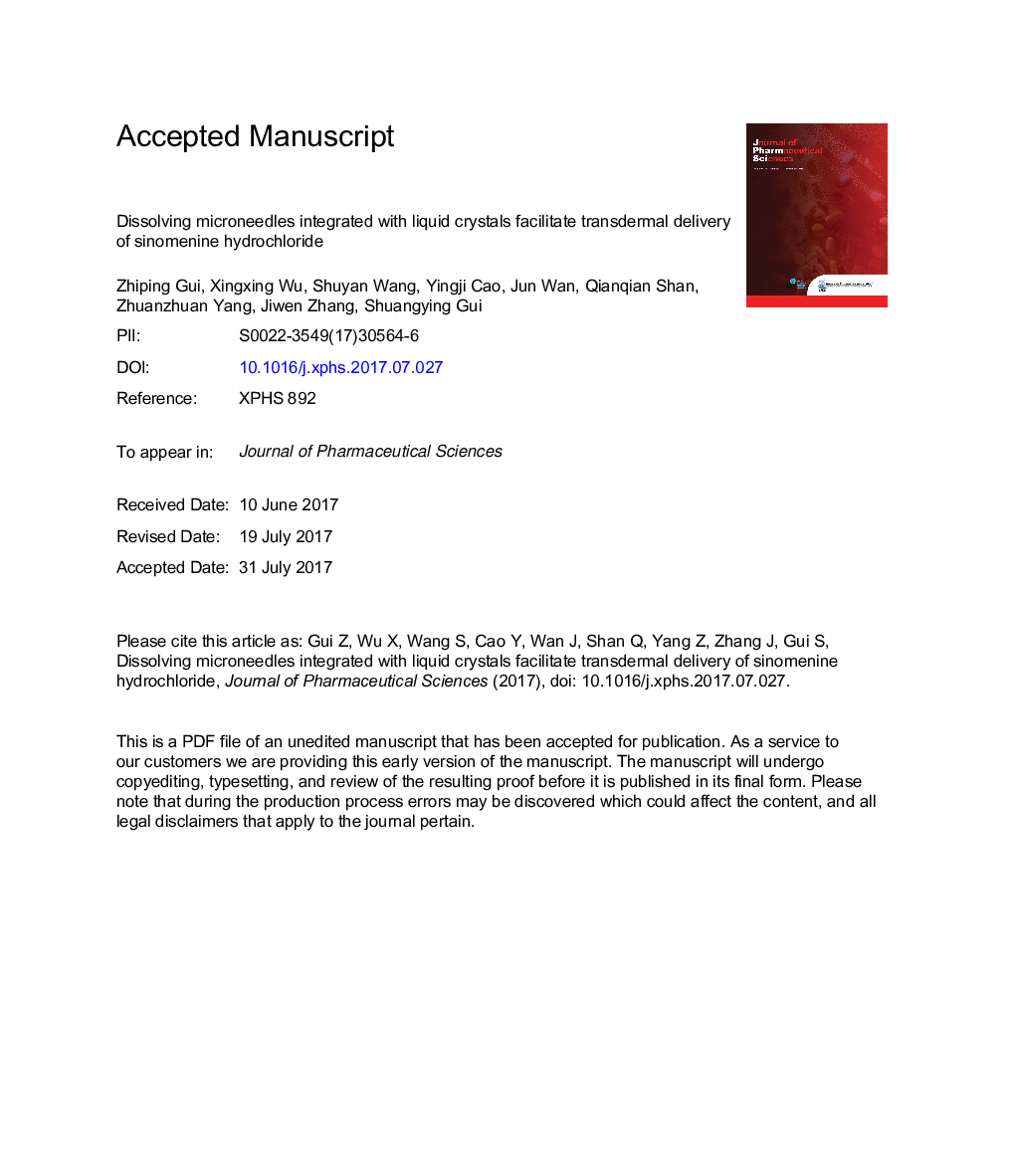| Article ID | Journal | Published Year | Pages | File Type |
|---|---|---|---|---|
| 8513684 | Journal of Pharmaceutical Sciences | 2017 | 37 Pages |
Abstract
The purpose of this study was to investigate the feasibility of delivering sinomenine hydrochloride (SH) transdermally using composite dissolving microneedles (DM) which integrated with liquid crystals (H2). The fabricated SH-loaded composite DM was evaluated for their appearance, mechanical strength, irritation, and efficiency of transdermal delivery of SH. Results depicted that optimized SH-loaded composite DM had sufficient mechanical strength to pierce into rat skin. The in vitro permeability study in rat skin was successfully performed using Franz diffusion cell which showed that the cumulative permeation of SH in the composite DM were significantly increased compared with H2 group (p <0.05), and the penetration rate of SH in the composite DM kept constant during 48 h compared with DM group. The study of in vivo pharmacokinetics effects showed that the transdermal absorption of SH was enhanced and sustained by the SH-loaded composite DM compared with SH-loaded H2 and SH-loaded DM. The skin irritation study in rats indicated that there were no irritation for normal skin, and the slight irritation for impaired skin recovered 24 h later. In conclusion, the novel composite DM may be a promising transdermal drug delivery system owing to its physical enhancing permeation function, drug reservoir effect, and biocompatibility.
Keywords
Related Topics
Health Sciences
Pharmacology, Toxicology and Pharmaceutical Science
Drug Discovery
Authors
Zhiping Gui, Xingxing Wu, Shuyan Wang, Yingji Cao, Jun Wan, Qianqian Shan, Zhuanzhuan Yang, Jiwen Zhang, Shuangying Gui,
